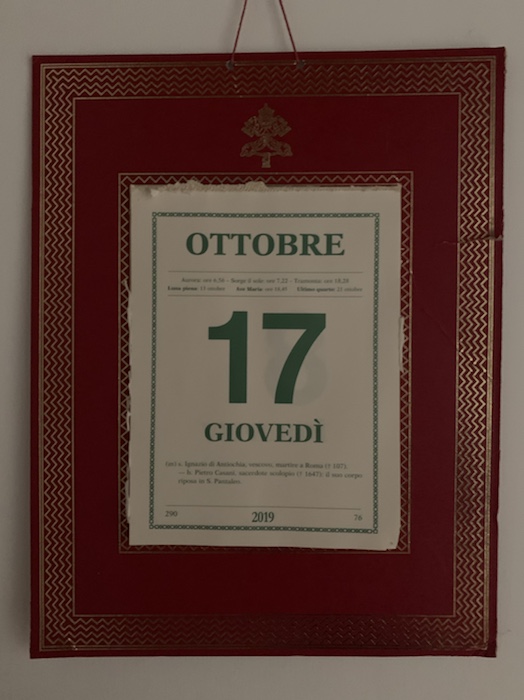 Sunrise… 7:22… Sunset… 18:28 and the Ave Maria is at…. ? Why 18:45, of course.
Sunrise… 7:22… Sunset… 18:28 and the Ave Maria is at…. ? Why 18:45, of course.
And somebody finally bit and asked “What is that Ave Maria bell? Is that the Angelus?”
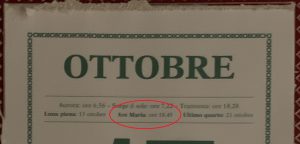
No, it is not the Angelus, which is said at 18:00, traditionally. This is specific to the Roman Curia, upon whose calendar this appears by now by long custom, harking back to another day.
The “Ave Maria” indicates the time of the ringing of the Ave Maria Bell, which once upon a time let people know at what point in the day they were when there were not an abundance of clocks. Think about how, in Rome, a canon sounds at noon, booming out over the City. Noon was important, because that’s when appointments and contracts began. Church appointments still begin at noon. There was a great solar clock tracing the analemma on the floor of Santa Maria degli Angeli. When the spotlight from the sun crossed the midday mark on the floor, a signal flag went up from the roof of the church. Spotted from the Gianicolo, a canon sounded the hour.
The Ave Maria signaled a turning point in the work day in the Curia. A bell rang, approximately one half hour after Sunset, 3 times, then 4 times, then 5 times, and then once. That indicated the change of the religious day from day to night.
Approximately, because the sunset changes but the Ave Maria stays fixed for a while, then changes in 15 minute increments. Hence, since right now the Ave Maria is rung at 18:45, as it is from for some days, then 17:45 is 23rd hour of the day and 19:45 is the 1st hour of the next day.
In the Roman Curia, Cardinals and other officials would still receive people in audience for the hour after the Ave Maria Bell rang. An hour after the Ave Maria, a single bell would toll, thus ending all business for the day, since it was the first hour of night.
Get it?
Meanwhile, here is the Chiesa Nuova in its sunny splendor. Santa Maria in Vallicella. This is the HQ of the Oratorians found by Rome’s co-patron with Peter and one of my favorites, St Philip Neri. Next door is the Oratory, designed by Borromini, whom I mentioned yesterday. Seized by the State, alas, and now a library.

I tried to sketch this the other day. Disaster. But I sure appreciate the detail more than ever now that I tried. It is slightly concave.
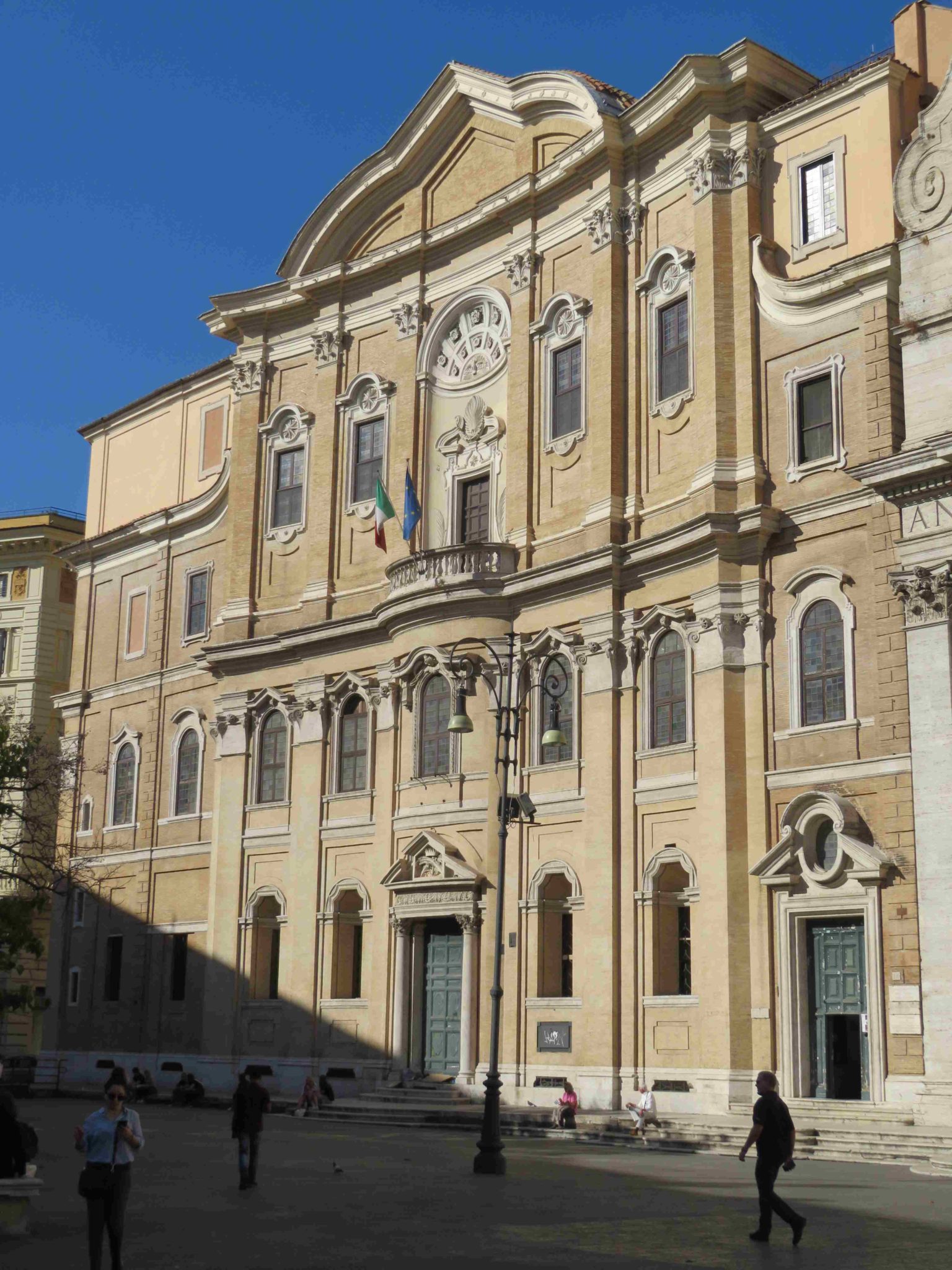
Let’s go into the church.
Look what the barbarians set up in front of that glorious sanctuary and altar. It is so blitheringly incoherent that you want to tear your hair. Set that up in front of that? And look how “permanent” made it. Grrrrr.

Altar painting. Interesting. Rubens, oil on copper and slate.

This is one of the great Counter-Reformation churches in Rome, following the lead of the Gesù, the mighty church of the still-sane Jesuits. Originally, St. Philip wanted it completely white, but, it got decorated as you can see. There are paintings within by Barocci and Pietro da Cortona.

A side chapel.


Another side chapel, to the Gospel side of the sanctuary, with the tomb of the saint. I have said Mass here many times.


A memorial inscription. Maybe one of you would like to take a shot at it. Some of these stones are poignant indeed.

Another inscription, which, sadly, we can see across the mensa of this altar, tells us who consecrated it and when. This church is filled with side chapels once teaming with priests saying Masses.

You see where they are, along the nave. That doesn’t show the transepts and other chapels.

When the City was filled with Oratorians for the canonization last week, many of them wound up at Ss. Trinità to say Mass. Telling.
This side altar had a painting by Caravaggio, now in the Vatican Museum
Christ is being taken down from the Cross. What you have to visualize, is a priest at the altar, saying Mass, at the moment of the Elevation. Christ’s hand, on the lower, hanging arm, would by pointing directly to where the Host and the Chalice would be held during the Elevation.

Outside again, on my way to complete an errand on my Roman To Do List.
Do NOT litter here.

My bookbinder.

I need a couple of document folders made, for when decrees or something must be read.
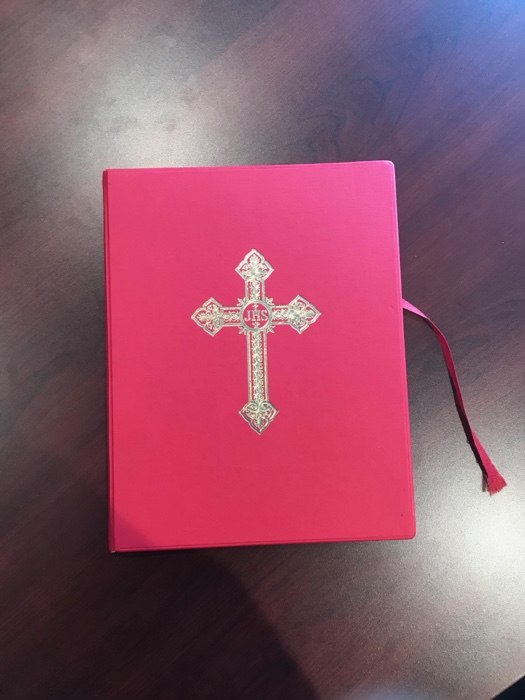
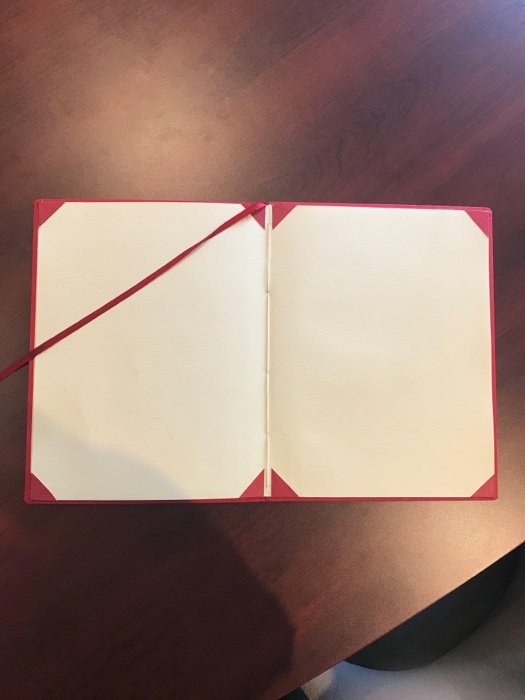
Behind the Oratory, the lovely bell tower.

There is a nice little square across from Borromini’s Oratory. At the back side of the square is a good restaurant, not stupendous, but good and reliable and pretty quiet where you can sit outside without traffic around you. Polese. The square has a statue ofNicola Spedalieri, was a priest who wrote some controversial things. It is said that he was poisoned by Jesuits. I can buy that! The libs put up this statue to him.

Meanwhile, I stopped to get a supplí, around the corner at Supplizio. I guess they are to die for.
While waiting I spotted this wonderful anchovy can. “Marca Vaticano”. There’s always something fishy in there.

My snack with caccio e pepe.

I also liked this…. Funky Tomatos.

Yes, that’s funky.
COLD REPORT: A little sniffly last night, so I took some cold meds that made me a little drowsy, but I got a good sleep and feel pretty good today. Still that lingering cough, but it isn’t bad.
Tonight, Mass for a friend.
Tomorrow, Friday, some penance for the Church and Mass for the routing and conversion of the Church’s internal enemies.

































“The New Italy (dedicated this) to Nicola Spedalieri 1903”
Yeah. And 41 years later 100,000 Romans crowded into St. Peter’s piazza to acclaim the true Father of Rome:
https://cnsblog.wordpress.com/2014/06/04/the-roman-miracle-a-look-back-70-years-ago-today/
And where was the “New Italy”?
Thank you for your daily updates, Father.
Where can one find the daily calendar at the beginning of each of your posts? Is it available for purchase online perhaps?
While I’m glad someone asked about the Ave Maria bell for the sake of the newbies, some of us ancianos remember it from previous travelogues
Where is your bookbinder specifically located? I need to have a missal repaired.